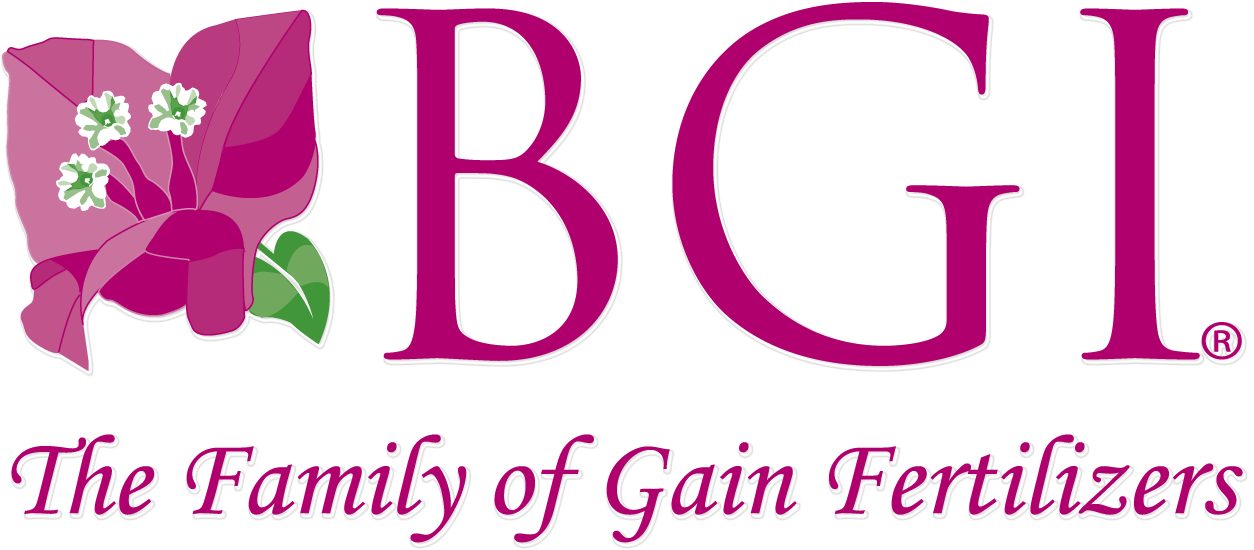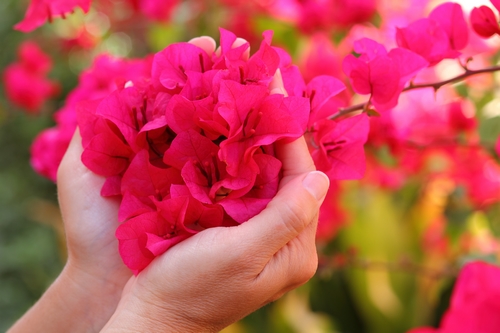Light & Temperature
Bougainvillea are tropical plants that thrive in areas outdoors with low rainfall and intense heat. For maximum blooming, they need direct sunlight for at least 5 hours per day. For best results, night temperatures should stay above 60°F (15°C) while daytime temperatures can exceed 100°F (38°C) without ill effect. Bougainvillea thrives in Hardiness Zones 9 and up, but can be enjoyed seasonally in other zones as long as they are protected and brought indoors during winter months. When treated as annuals, bougainvillea can be wintered over in basements or other cool and lower light areas.
Feeding
The Achilles heel of bougainvillea has always been their delicate and thin root system. Use a fertilizer high in micronutrients, especially Iron, to promote spectacular blooming and healthy root development such as Bougain®. Bougain® contains 5% Iron and other micronutrients to strengthen delicate roots and intensify color of bracts and foliage. Bougainvillea are heavy feeders that crave minors during flowering season, so remember to regularly feed your plant during these months. Reduce the frequency to half during non-coloring months, especially under cool temperatures.
Watering
The amount of watering needed is directly related to the climate, soil type, plant size and weather conditions. However, there are some guidelines you can use. Bougainvillea are drought-tolerant plants, and require very little water once established. Bring the soil to visual dryness between waterings. Wilting is the best indicator that watering is needed. Take care not to let your bougainvillea get bone-dry, as this will cause bracts and foliage to drop. When it is time to water, do it thoroughly – making sure that every inch of root gets watered. When choosing an area to plant your bougainvillea, remember that higher ground is best – as this makes water drain AWAY from the roots. Avoid constant, light, and frequent watering as this will promote a weak and shallow root system and prevent any major coloring on your bougainvillea. Be careful not to allow your bougainvillea to sit in water as this may cause bracts to drop or stop blooming altogether. If your bougainvillea is grown in a pot – make sure drainage holes are unobstructed, and toss that water dish… bougainvillea do not like wet feet!
Pruning & Pinching
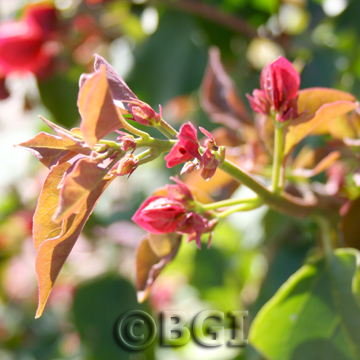
PINCHING, STEP 1: Identify new shoots. New bougainvillea shoots are green, pliable, and contain immature leaves and buds at the very tip. 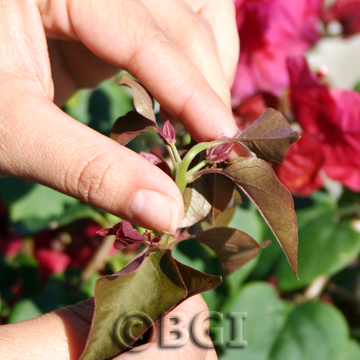
Using thumb & forefinger, bend the very tip of the shoot (approximately 1 inch). 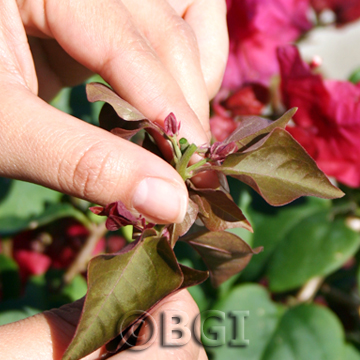
Continue to bend the tip until it snaps off completely. 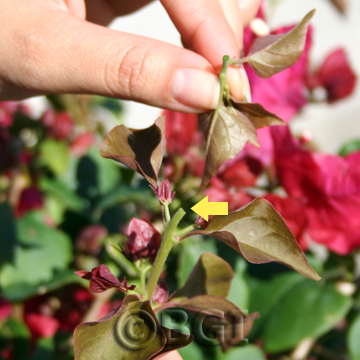
Discard the removed tip. A new shoot will pinch off easily with a clean break. 
PRUNING, STEP 1: With clean, sharp pruning shears, remove unwanted branch. 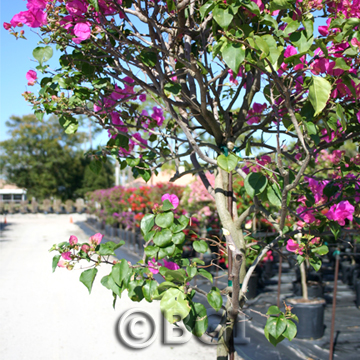
PRUNING, STEP 2: Confirm the cut area is clean. 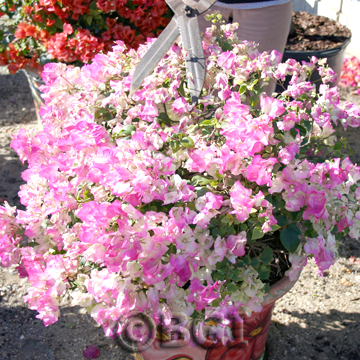
TRIMMING, STEP 1: With clean, sharp hedging shears, remove unwanted ends of branches, foliage, and bracts. 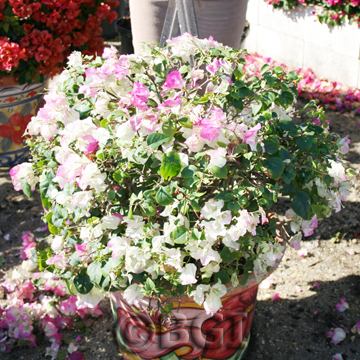
TRIMMING, STEP 2: When trimming for a certain shape, it's helpful to take a step back once in a while to assess your handiwork along the way!
Pruning and pinching bougainvillea are important techniques to promote the greatest growth and flowering – as bougainvillea only bloom on new growth. Pruning is important not only for shape but for strength as well since bougainvillea tend to grow outward without creating branches unless their stems are pruned. They can be pruned hard if growth is excessive.
In Florida, landscape professionals commonly perform a hard cut at the first sign of summer, and keep on a regular trimming schedule all summer long to maintain size. Pinching is the method of removing the soft tips of young plant stems to encourage fuller growth. You can do this with a pair of secateurs, or by using your fingers to pinch off ½ inch from the tip of new soft growth. Bougainvillea will send out several new stems just below the pinched tip.
The more regularly you pinch, the more your bougainvillea will branch and bloom. The best time to prune or pinch is after the flush of color or flowering cycle is completed. Flowering cycles are typically four to six weeks.
Soil
Bougainvillea grow best in well-drained loamy soil (made up of equal parts sand, silt, and clay), mixed with organic matter which allow nutrients and oxygen to more easily reach the roots. Use a soil mix described as “quick draining” such as BGI Select Soil™ for best results. Do not use any kind of water-retaining soil as this may cause root rot and leaf spots to appear.
*This document is copyrighted and cannot be used without expressed and written permission by Bougainvillea Growers International.

